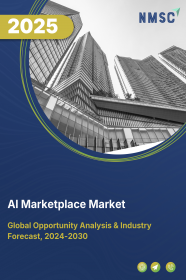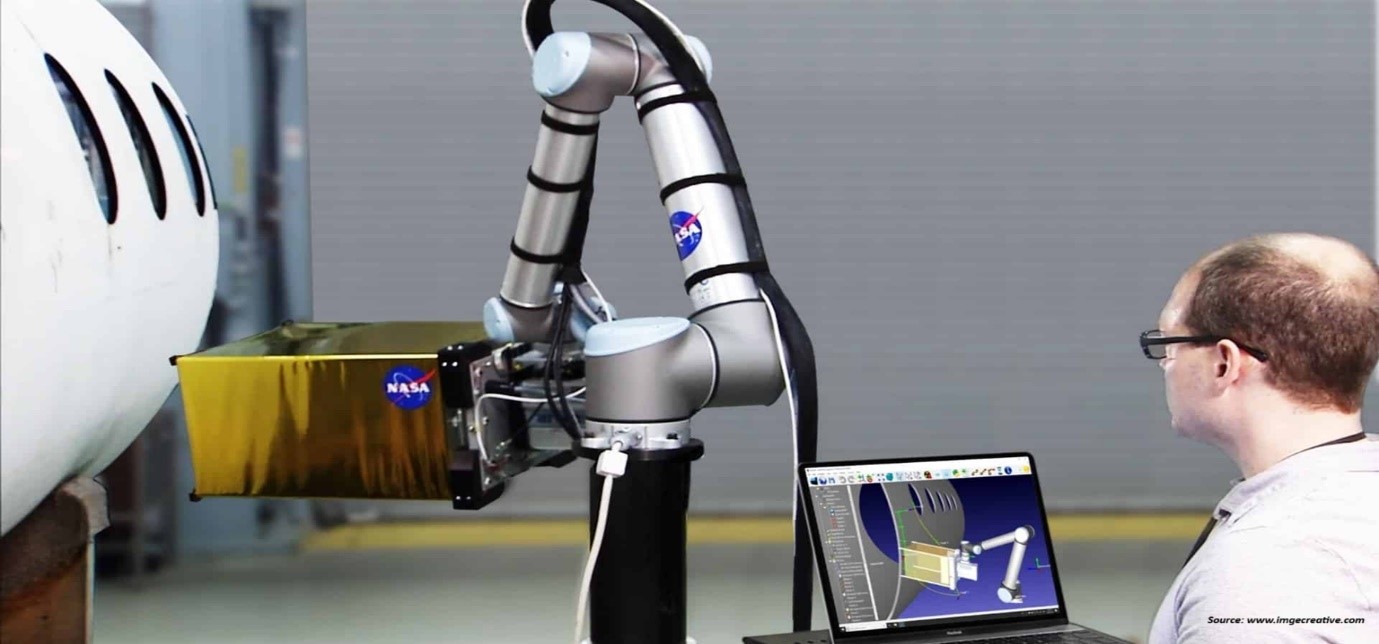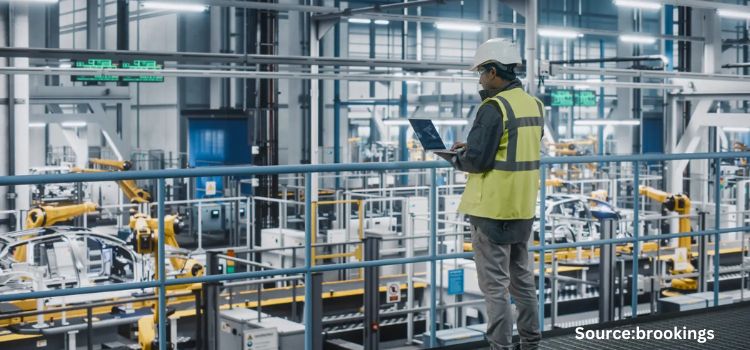
Italy Robot Software Market by Software Type (Recognition Software, Simulation Software, Predictive Maintenance Software, Communication Management Software, and Data Management and Analysis Software), by Robot Type (Service Robots and Industrial Robots), by Deployment Mode (On-premise and On-demand), by Organization Size (Large Enterprises and Small and Medium-sized Enterprises (SMEs) – Opportunity Analysis and Industry Forecast, 2024–2030
Industry: ICT & Media | Publish Date: 14-Feb-2025 | No of Pages: 126 | No. of Tables: 92 | No. of Figures: 57 | Format: PDF | Report Code : IC2389
US Tariff Impact on Italy Robot Software Market
Trump Tariffs Are Reshaping Global Business
Italy Robot Software Market Overview
The Italy Robot Software Market size was valued at USD 205.0 million in 2023, and is expected to reach USD 975.4 million by 2030, with a CAGR of 23.9% from 2024 to 2030. Robot software consists of a suite of programs and algorithms designed to supervise and manage the operations of robots or robotic systems in various industries such as logistics, manufacturing, entertainment, healthcare, and more. Its functionality encompasses several crucial components. Firstly, it coordinates and manages the movements and behaviors of robots, ensuring precise and efficient task execution by issuing detailed commands to robotic components such as motors and actuators.
Additionally, robot software plays a critical role in interpreting data from various sensors embedded within robots, including cameras, Light Detection and Ranging (LIDAR) sensors, and tactile sensors. This data interpretation provides essential environmental feedback that enables robots to accurately perceive and understand their surroundings. An integral aspect of robot software is its ability to make intelligent decisions using artificial intelligence (AI) and machine learning (ML) algorithms. Through the analysis of data from sensors, adherence to predefined rules, or learning from past experiences, robots can adapt to changing conditions, allowing them to operate autonomously and adjust their actions in real-time.
Furthermore, robot software facilitates communication and networking among robots, enabling collaboration for complex tasks or data exchange with a central control system. This interconnectedness facilitates synchronized operations in industrial environments, leading to enhanced efficiency and productivity.
The Convergence of Industry 4.0 and IoT Drive the Italy Robot Software Market Trends
The convergence of Industry 4.0 and the Internet of Things (IoT) serves as a significant driver for the growth of the Italy robot software market demand. Industry 4.0, characterized by the integration of digital technologies into manufacturing processes, along with advancements in IoT, has revolutionized industrial automation. IoT-enabled devices and sensors enable real-time data collection and communication, offering valuable insights into manufacturing operations and enhancing connectivity throughout the production ecosystem. This interconnected framework creates opportunities for robot software solutions to utilize data analytics, predictive maintenance strategies, and adaptive control algorithms, optimizing the performance and efficiency of robots.
Additionally, Industry 4.0 principles prioritize agility, flexibility, and scalability, fueling the demand for robot software solutions that facilitate seamless integration, interoperability, and collaboration within smart manufacturing environments. Consequently, the synergies between Industry 4.0 and IoT drive the adoption of robot software, fostering innovation and efficiency in industrial automation processes.
Increasing Investments in Research and Development (R&D) Drive the Italy Robot Software Market Growth
Increasing investments in research and development (R&D) are pivotal in propelling the growth of the Italy robot software market. With organizations and governments allocating more resources to R&D initiatives, there is a heightened emphasis on advancing robotics and automation technologies, including robot software. These investments serve as catalysts for innovation, resulting in the development of more sophisticated and capable robot software solutions. R&D endeavors contribute significantly to enhancing functionalities such as AI integration, machine learning algorithms, and advanced control systems, thereby enabling robots to perform complex tasks with increased efficiency and autonomy.
Additionally, R&D investments facilitate the exploration of new applications and use cases for robot software across diverse industries, thereby expanding the market's potential. By fostering technological advancements and addressing emerging challenges, heightened R&D investments stimulate market growth and drive the evolution of the robot software market.
Cybersecurity and Data Protection Concerns Associated with Robot Software Restrain the Italy Robot Software Market Growth
Cybersecurity and data protection concerns related to robot software pose significant obstacles to Italy robot software market growth. As robots become more interconnected within digital ecosystems, they are increasingly vulnerable to cyber threats such as unauthorized access, data breaches, and malware attacks. Inadequate cybersecurity measures within robot software can compromise sensitive data, intellectual property, and operational integrity, leading to potential financial losses and reputational harm for organizations.
Additionally, with the rise of IoT-enabled robots and the collection of extensive data, there is a heightened risk of data privacy violations and regulatory non-compliance. Consequently, organizations are hesitant to adopt robot software solutions without robust cybersecurity features and data protection mechanisms, hindering market expansion. Addressing these concerns through enhanced cybersecurity measures, encryption protocols, and compliance frameworks is crucial to foster trust and encourage broader adoption of robot software across various industries.
Development of Digital Twins and Simulation Software Creates New Opportunities in the Italy Robot Software Market
The emergence of digital twins and simulation software creates fresh opportunities in the market by offering advanced tools for modeling, testing, and optimizing robotic systems in the country. Digital twins generate virtual replicas of physical robots and their surroundings, facilitating real-time monitoring, analysis, and predictive maintenance. Simulation software enables users to simulate different scenarios and environments, validating robot software algorithms and enhancing performance before deployment. These technologies provide notable advantages, including reduced development time and costs, improved scalability, and enhanced risk management.
Moreover, digital twins and simulation software facilitate collaborative development and training, enabling stakeholders to iterate and refine robot software solutions more efficiently. By furnishing robust tools for design, testing, and optimization, the emergence of digital twins and simulation software drives innovation and expedites the adoption of robot software across various industries.
Competitive Landscape
Several key players operating in the Italy robot software industry include IBM, NVIDIA, ABB Ltd., FANUC, Teradyne, Inc., H2O.ai, Brain Corp, CloudMinds, Clearpath Robotics, and Neurala, Inc. These market players are adopting strategies to maintain their dominance in the market.
Italy Robot Software Market Key Segments
By Software Type
-
Recognition Software
-
Simulation Software
-
Predictive Maintenance Software
-
Communication Management Software
-
Data Management and Analysis Software
By Robot Type
-
Service Robots
-
Ground
-
Aerial
-
Underwater
-
-
Industrial Robots
-
Traditional Industrial Robots
-
Articulated Robots
-
SCARA Robots
-
Parallel Robots
-
Cartesian Robots
-
Other Robots
-
-
Collaborative Industrial Robots
-
By Deployment Mode
-
On-premise
-
On-demand
By Organization Size
-
Large Enterprises
-
Small and Medium-sized Enterprises (SMEs)
By Industry Vertical
-
Banking, Financial Services, and Insurance (BFSI)
-
Automotive
-
Retail and eCommerce
-
Aerospace & Defense
-
Healthcare and Life Sciences
-
Transportation and Logistics
-
Manufacturing
-
Telecommunications and IT
-
Academia and Research
-
Media & Entertainment
-
Others
REPORT SCOPE AND SEGMENTATION:
|
Parameters |
Details |
|
Market Size in 2023 |
USD 205.0 Million |
|
Revenue Forecast in 2030 |
USD 975.4 Million |
|
Growth Rate |
CAGR of 23.9% from 2024 to 2030 |
|
Analysis Period |
2023–2030 |
|
Base Year Considered |
2023 |
|
Forecast Period |
2024–2030 |
|
Market Size Estimation |
Million (USD) |
|
Growth Factors |
|
|
Companies Profiled |
10 |
|
Market Share |
Available for 10 companies |
|
Customization Scope |
Free customization (equivalent up to 80 working hours of analysts) after purchase. Addition or alteration to country, regional, and segment scope. |
|
Pricing and Purchase Options |
Avail customized purchase options to meet your exact research needs. |
KEY PLAYERS
-
IBM
-
NVIDIA
-
ABB Ltd.
-
FANUC
-
Teradyne, Inc.
-
H2O.ai
-
Brain Corp
-
CloudMinds
-
Clearpath Robotics
-
Neurala, Inc

















 Speak to Our Analyst
Speak to Our Analyst





















